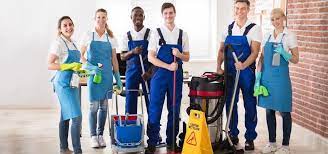A clean office isn’t just about appearances. It’s a basic need for employee health, productivity and reputation. But how clean is clean enough? Many businesses stick with the same cleaning routine for years, never questioning if it’s effective. Here’s what you should really expect when it comes to office cleaning—and signs it might be time to review your setup.
Hygiene Has Moved Beyond the Basics
A quick vacuum and empty bins no longer cut it. In shared spaces like meeting rooms, kitchens and bathrooms, cross-contamination is a real risk. Bacteria can spread fast from desks and door handles to keyboards and breakroom appliances.
Modern office cleaning should include:
- Disinfecting high-touch surfaces daily.
- Proper chemical usage (not just multipurpose sprays).
- Colour-coded cloths to avoid bathroom bacteria ending up on your desk.
If your cleaner is using one rag for everything or skipping desks altogether, that’s a red flag.
Is Cleaning Aligned With Occupancy?
Workplaces have changed. Hybrid work means some days the office is near-empty, while others it’s packed. Cleaning should reflect that.
Ask yourself:
- Are busier days getting deeper cleans?
- Are kitchen bins overflowing before they’re emptied?
- Is the bathroom still wet from a once-a-day mop?
If your cleaning schedule doesn’t flex with usage, it’s not effective.
Clean Air Is Part of a Clean Office
Dust isn’t just unsightly. It’s linked to allergies, asthma, and poor concentration. A good cleaning plan covers more than just surfaces.
Your service should also include:
- Regular dusting of vents, blinds and window sills.
- Vacuuming carpets with HEPA filters.
- Cleaning air purifier units, if installed.
Ignoring this affects both wellbeing and productivity.
Does Your Cleaning Service Report Back?
Accountability matters. Top cleaning providers don’t just show up—they report issues, track consumables, and alert you to hygiene concerns.
Look for:
- Digital job reports or checklists.
- Communication about broken dispensers, pests or supply restocking.
- Feedback options or periodic reviews.
Silence might mean the job’s rushed—or not done.
Green Cleaning Isn’t Optional Anymore
Clients, staff and regulators all expect more sustainable practices. That means using low-tox products, minimising plastic, and conserving water.
A quality office cleaning service will:
- Use certified eco-friendly chemicals.
- Train staff on safe and green methods.
- Help you reduce your environmental footprint.
If your provider hasn’t mentioned this, they’re behind the curve.
The Hidden Costs of Cutting Corners
Poor cleaning can cost you:
- Staff sick days due to germs spreading.
- Embarrassment during client visits.
- Increased maintenance from neglected spaces.
Trying to save a few dollars can quickly become expensive.
Not Sure Where to Start?
Compare your current setup with trusted industry standards. If you notice big gaps, it might be time to rethink who’s handling your office hygiene.
Start by reviewing a professional Office Cleaning provider to see what modern, flexible and health-focused services really look like. You might also explore how Office Cleaning options have adapted to hybrid workplaces, or how Office Cleaning can help meet your sustainability goals.
External Source Reference
For further insight into hygiene in commercial settings, see this resource from Safe Work Australia on workplace cleaning and hygiene requirements.

